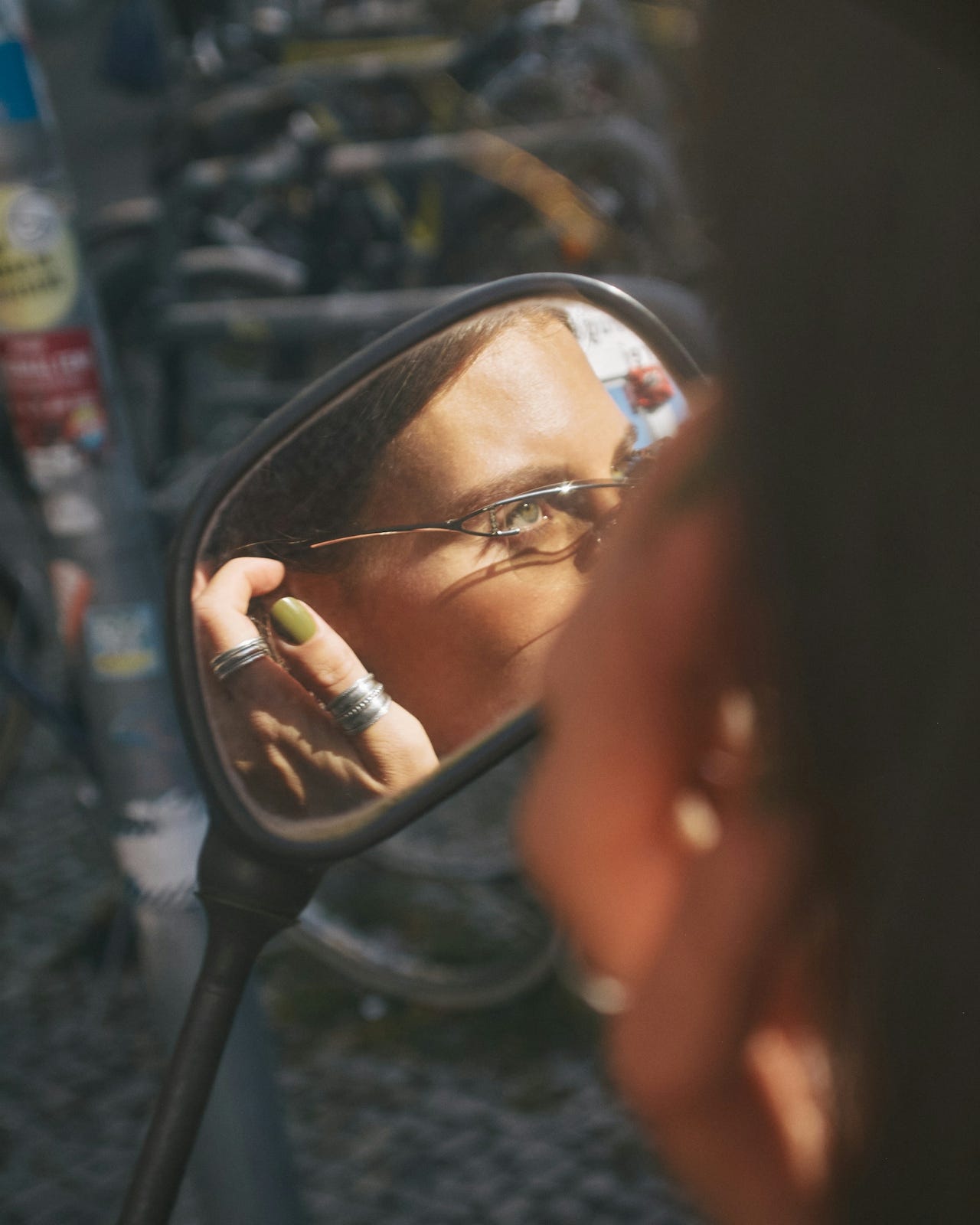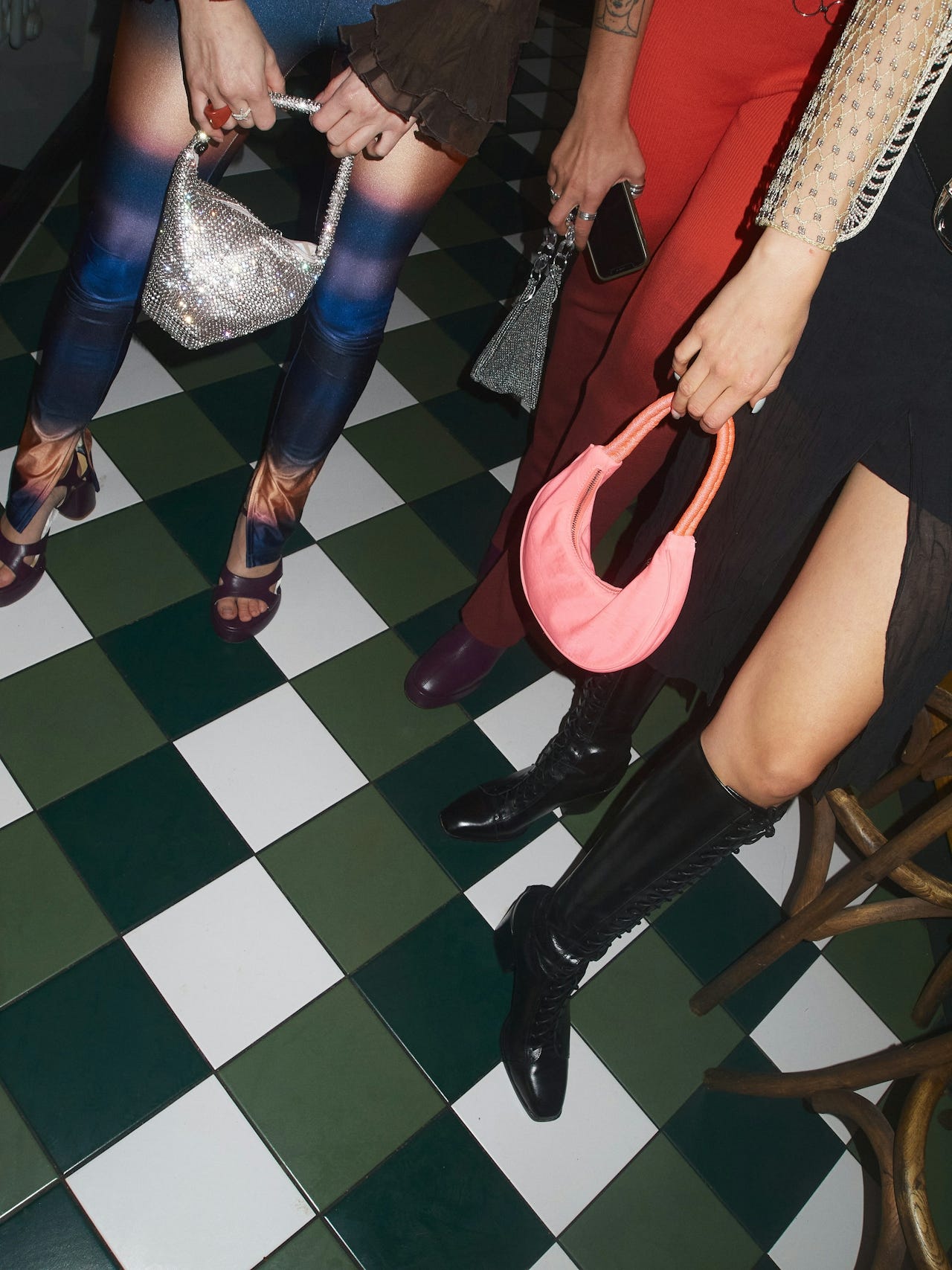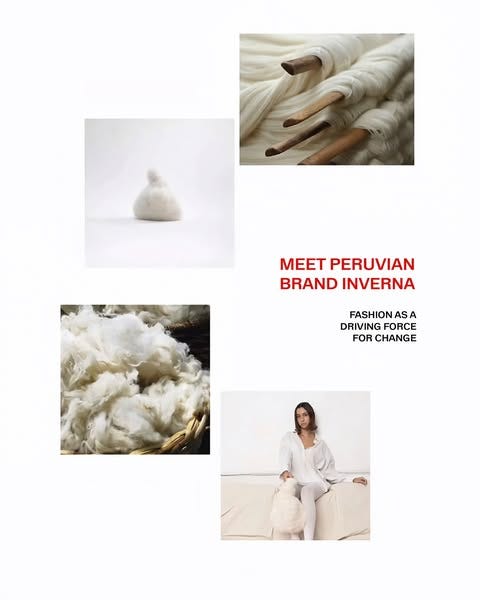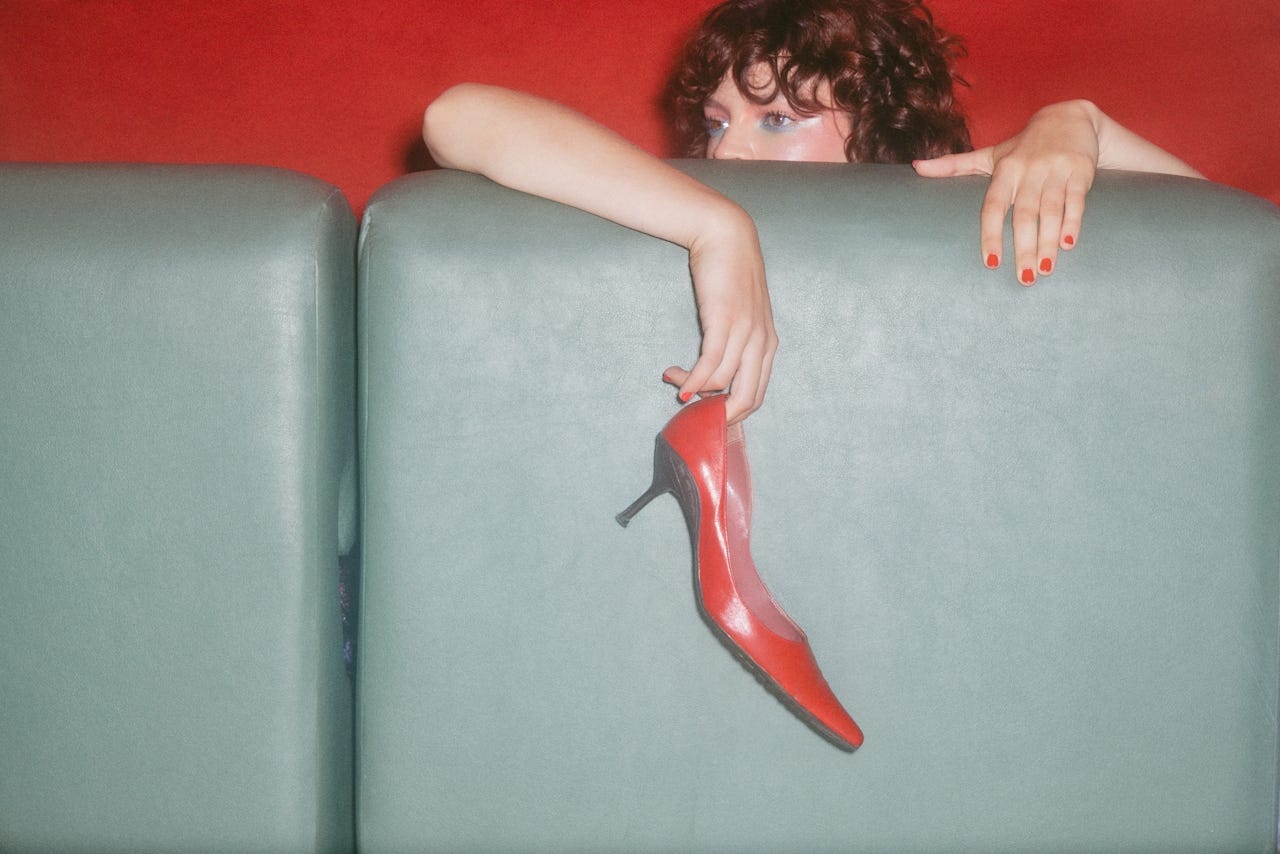THE ART OF DRESSING FOR OUR OWN GAZE
Share
While the fashion industry’s calendar is punctuated by seasonal collections and runway debuts, the relentless cycle of renewal often leaves little room for personal identity. Instead of constantly chasing trends, what if style could be anchored in genuine self-expression?
In today’s landscape, the fashion ecosystem has built its narrative around the idea of perpetual change. Every new collection, every runway show, signals a countdown toward obsolescence. Once an idea is introduced, the clock starts ticking, urging consumers to replace yesterday’s “must-have” with tomorrow’s “it.” Yet, as these cycles get faster than ever, questions arise: Is the relentless push for wardrobe renewal truly beneficial? Or does it lead us away from a more thoughtful, even sustainable approach to dressing?
Thanks for reading! Subscribe for free to receive new posts and support my work.
Perpetual renewal
The modern fashion system thrives on the idea of renewal. Since the early days of the runway, designers have used seasonal collections as a way to introduce new aesthetics, challenge norms, and spark consumer excitement. However, what once took years to evolve has been compressed into a matter of weeks. Trend cycles have shortened dramatically, largely driven by fast fashion retailers and a media environment that glorifies the new.
Retailers and brands present their collections not as discrete bodies of work but as part of a continuous stream of innovation. With the advent of digital marketing and social media, the lifespan of a trend can be astonishingly brief. Platforms like Instagram, TikTok, and Pinterest are awash with influencers showcasing the latest must-have items, urging their followers to update their wardrobes immediately. This constant pressure creates a culture of disposability, where garments are valued more for their novelty than their durability or intrinsic beauty.
Today, ultra-fast fashion brands release thousands of new items daily. These companies utilize sophisticated algorithms to predict consumer behavior, ensuring that what’s trending today is replaced by something new tomorrow. The result is a market flooded with inexpensive, quickly made clothing—each piece designed to be worn a few times before it is discarded. The environmental and social costs of this system are immense: excessive waste, exploitative labor conditions, and a significant carbon footprint.
Yet, despite the downsides, the promise of constant renewal carries a seductive appeal. It feeds the desire for self-expression and reinvention, making it seem as though each new purchase is a step toward a more refined, updated version of ourselves. The narrative is clear: Your identity is as fluid as your wardrobe, and staying relevant means keeping up with the latest trends.
The illusion of change
At first glance, the prospect of a renewed wardrobe every season seems empowering. The idea of reinvention is deeply embedded in modern culture—think of the endless transformations of celebrity style, the ever-changing aesthetics on your social media feed, and the hype surrounding fashion weeks in global capitals.
The notion that one can sculpt their identity through clothing has undeniable appeal.
However, a closer look reveals that this narrative is less about personal empowerment and more about consumer control. The industry’s fixation on the “new” effectively creates a perpetual dissatisfaction with what we already have. In an environment where every piece of clothing is deemed outdated as soon as it leaves the shelf, it becomes nearly impossible to develop a lasting, meaningful relationship with our garments. This is where the conversation must shift from a celebration of creativity to a critique of an unsustainable model.
Media outlets and marketing campaigns amplify this mindset, reinforcing the belief that there is always something better on the horizon. Glossy advertisements and influencer endorsements conflate self-worth with possession of the latest items, fostering an endless loop of desire and disposability.
Challenging the status quo
The idea of rejecting the constant call for renewal is not new, yet it remains a radical act in an industry that defines itself by change. One promising counter-narrative is the concept of “dressing for our own gaze.”
This philosophy invites individuals to curate their wardrobe based on personal meaning rather than market trends. It challenges the notion that our worth is measured by the novelty of our attire and instead champions that true style is a manifestation of our inner identity.

This approach does not imply a complete rejection of new clothing. Instead, it advocates for a more balanced and thoughtful consumption pattern—one where the acquisition of new items is weighed against the value of what we already own. It challenges us to ask: Does this new piece genuinely add to my sense of self, or is it merely a transient distraction?
Economic and environmental implications
Beyond the personal, the culture of constant renewal has broader implications—economically and environmentally.
Although we do know about the environmental toll of fast fashion. We know about its production process and how resource-intensive it is, how it consumes vast quantities of water and energy while generating significant waste… Moreover, the reliance on synthetic fibers, which do not biodegrade easily and contribute to long-term pollution problems and how textile waste is piling up in landfills around the world, it is important to take the conversation from social media and into our closets.
¿What changes can we implement into our dynamic with the need for constant renewal?
The current dominant fashion model, with its focus on volume and speed, has created a market that is both highly competitive and alarmingly wasteful. For consumers, the low prices of fast fashion are enticing. However, the true cost of these garments is often hidden, paid in the form of environmental degradation and ethical compromises.
Economically, categories like fast fashion have redefined consumer behavior. It has made the latest trends accessible to a broad audience, but often at the expense of quality and durability. Items that cost only a few dollars are designed to be worn a handful of times before being discarded.
Business models that value newness as the ultimate goal not only undermine traditional craftsmanship but also create a cycle of continuous spending, where consumers are constantly pressured to buy the next new item. In a sense, the industry has engineered a form of consumer dependency, where personal identity is inextricably linked to the frequency of purchases.
Financially, investing in a smaller number of higher-quality items may prove more economical over time. By opting for garments that last longer, consumers can reduce the need for constant repurchasing, thereby easing the financial burden. Additionally, supporting sustainable and ethically produced clothing contributes to a market that values transparency and responsibility—a market where the true cost of production is recognized and respected.
Brands that focus on craftsmanship and ethical production often employ techniques that emphasize durability and timeless design. These items are not produced in the millions; rather, they are crafted with care, using materials that are meant to endure. In a world where mass production dominates, choosing such items is a conscious act of resistance. It is a way of saying that quality, sustainability, and authenticity are worth more than the fleeting allure of the new.
Media narratives and the role of brands
The media plays a pivotal role in shaping our perceptions of fashion and identity. Advertisements, social media influencers, and celebrity endorsements all contribute to a narrative that equates newness with progress, and novelty with desirability. In this context, brands are not merely selling clothing; they are selling an idealized version of self-improvement. Every campaign is carefully constructed to create an emotional connection between the consumer and the product, promising that the latest trend will lead to a more exciting, fulfilled life.
However, this narrative is not without its contradictions. On one hand, the industry champions innovation and change. On the other, it often relies on the very elements of the past to evoke a sense of nostalgia and authenticity. This duality is evident in marketing campaigns that blend modern aesthetics with vintage imagery, suggesting that the new and the old are not mutually exclusive but can coexist harmoniously.

This blending of eras underscores a crucial point: fashion does not need to be a race toward the new. Instead, it can be a deliberate process of selection, where every piece is chosen for its ability to reflect personal values and experiences. By resisting the siren call of constant renewal, consumers can redefine what it means to be stylish. Instead of following trends dictated by external forces, they can forge a style that is uniquely their own.
Moreover, the digital age has democratized fashion in many ways. Social media platforms have given rise to micro-influencers and everyday tastemakers who advocate for authenticity and individuality. These voices often challenge mainstream narratives, emphasizing that personal style is less about adhering to a predetermined formula and more about celebrating diversity and self-expression. This shift is particularly evident in online communities that champion sustainable fashion, thrift shopping, and DIY clothing customization. Through these platforms, individuals are finding support and inspiration to break free from the confines of the fast fashion model.
Rethinking consumption in the era of “cores” and microtrends
The digital evolutions have had a profound impact on the fashion industry, reshaping how trends are disseminated and consumed. Online shopping, fast-paced social media feeds, and algorithm-driven recommendations have all contributed to an environment where the new is constantly just a click away. While technology has democratized access to fashion, it has also amplified the pressures of rapid consumption. The ease of purchasing new items online, combined with targeted advertisements that exploit our insecurities, creates a perfect storm for overconsumption.
However, the same digital platforms that fuel fast fashion can also serve as powerful tools for change. There is a growing online community of individuals and influencers advocating for slow fashion and mindful consumption. These voices encourage a more critical approach to shopping—one that questions the need for every new purchase and promotes the idea of investing in quality over quantity. They share tips on how to identify timeless pieces, repair and upcycle old garments, and build a wardrobe that is both versatile and sustainable.
Fashion, identity and culture
At its core, fashion is an expression of identity. Yet, in the current market, there is often a disconnect between the clothes we wear and who we truly are. The narrative of constant renewal encourages us to see our identities as fluid and ever-changing, constantly in need of reinvention. While this perspective can be liberating, it can also lead to a form of existential dissonance, where external appearance is prioritized over authenticity.
In many cultures, particularly in Latin America and Mexico, clothing has long been a medium through which personal and collective identities are expressed. Traditional garments, whether embroidered blouses, handwoven textiles, or culturally significant accessories, carry with them the weight of history, community, and heritage. These items are not merely fashion statements—they are embodiments of values, memories, and stories passed down through generations. Embracing such pieces is a way to resist the homogenizing effects of global fast fashion and to assert a unique cultural identity in the face of mass-produced trends.
c.a.n.c.i.n.o A post shared by @c.a.n.c.i.n.o
A post shared by @c.a.n.c.i.n.o
For example, in Mexico, the reemergence of artisan-made textiles has sparked a renewed interest in traditional craftsmanship. Designers are increasingly collaborating with local artisans, incorporating techniques and motifs that have been honed over centuries. This collaboration not only preserves cultural heritage but also provides a counterbalance to the disposable nature of much of contemporary fashion.
At the same time, this intersection of fashion, identity, and culture invites us to consider what truly constitutes style. Is it the price tag, the label, or the novelty of a design? Or is it something far more profound—the way a garment makes us feel, the memories it evokes, and the story it tells about our journey through life?
This question lies at the heart of the debate over constant wardrobe renewal. The push for newness often obscures the possibility that our most cherished pieces might actually be the very ones that define us.
Reimagining the future of Fashion
Looking forward, what might the future of fashion hold if more people begin to question the dominant narrative of constant renewal?
It is possible to envision a fashion ecosystem where quality, sustainability, and individuality are at the forefront of consumer choices. Such a system would be less about fleeting moments of trend and more about enduring values.
Ultimately, reimagining the future of fashion is about more than just changing what we buy—it’s about transforming the values that underpin our relationship with clothing. It is an invitation to see fashion not as a means of constant reinvention, but as a way to honor our past, celebrate our present, and invest in a more thoughtful future.
As spring unfolds and the promise of renewal permeates the air, we are once again faced with a familiar call: update your wardrobe, reinvent your look, be ready for the season ahead. But perhaps this season, we can pause to reflect on what renewal truly means.
Instead of succumbing to the relentless push for newness, we might choose to invest in what we already have—to see the beauty in a worn leather jacket, the comfort in a well-loved shirt, and the authenticity in garments that have accompanied us through life’s most important moments.
By embracing a more intentional approach to fashion, we can disrupt the cycle of disposability that has come to define our industry. We can resist the narrative that equates our worth with the latest trend and instead find confidence in the enduring quality of our personal style. This is not a call to reject fashion altogether, but rather an invitation to redefine it on our own terms.
The true wardrobe revolution starts when we prioritize authenticity over novelty, quality over quantity, and self-expression over external validation.
In a world where the pace of change is relentless, choosing to dress for our own gaze becomes an act of quiet rebellion—a declaration that our identity is not up for sale with every passing season. It is a reminder that true style is not fleeting; it is a reflection of who we are, woven from the fabric of our experiences and the memories that linger in every cherished garment.
So, as you contemplate your spring wardrobe, ask yourself: Do I need another new piece, or can I rediscover the treasures already in my closet? In that question lies the potential for a new kind of style—a style that is less about keeping up with the world and more about staying true to oneself. By embracing this approach, we can transform not only our wardrobes but also the very narrative of fashion itself.
The call for a spring wardrobe renewal does not need to be a demand for constant change.
The revolution in fashion begins in the quiet moments of introspection—when you decide that your identity is worth more than a fleeting trend, and that the clothes you already wear carry the stories of who you are.












